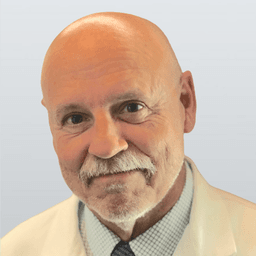After 40 years as an emergency room, urgent care, and family doctor, I know that diagnosing heart disease is fraught with danger. If you write off cardiac pain as chest wall pain, for example, you might cost a patient his life. Complacency is the greatest enemy for a practicing physician.
As a young doctor, I enjoyed moonlighting in emergency rooms, usually at night after I had worked in my office during the day. The ER was great training, and I believe it made me a much better family doctor. It was exciting, stimulating, and even fun to face the many challenges.
One of the best ways to teach the fundamentals of heart disease is through anecdotes. Anecdotes won’t usually get someone published in a medical journal, but they serve a useful purpose. I’ve selected three cases representative of heart disease. While all three happen to be male, heart disease is also the No. 1 cause of death for females. It can be much more difficult to diagnose cardiac disease in women because of an absence of the “classic” symptoms of heart disease.
Bob
Occasionally, my private practice and the ER would intersect. One evening when I was working the ER, Bob showed up with a worried look on his face as he clutched his chest. I immediately grabbed his chart and began questioning him and his wife. He had been in good health, with only a mild elevation of his blood pressure that was well-controlled with medication. I inquired if he had been doing anything unusual that might have brought on his chest discomfort.“Yeah, Doc,” he said. “I was helping my neighbor push a car when this tearing sensation started in my chest. Oh, and we were pushing the car uphill.”
Seasoned physicians all agree that it’s the history provided by the patient that’s the most important part of the encounter. I needed to go no further with an exam, lab, or x-ray. The diagnosis was readily apparent. Bob described his chest pain as radiating to his upper back. His vital signs were normal; however, his skin was pale and clammy. I ordered a stat CT scan of the chest and anxiously awaited the results.
When the CT results finally appeared, I was stunned with the “NORMAL EXAM” written across the form. It couldn’t be possible. I returned to the bedside where Bob looked the same; still unable to find a comfortable position and in obvious distress. Refusing to accept the radiologist’s report, I pondered my next move.
I just happened to see a cardiovascular surgeon friend of mine passing through the ER. I presented Bob’s case to him, and he agreed that Bob’s story and the CT results didn’t match. He suggested a transesophageal echocardiogram. Another colleague, a cardiologist, also just happened to be in the ER, and he agreed to do the test immediately. And there it was; Bob had an enormous dissecting aneurysm of the aorta, the largest artery in the human body.
Cardiovascular surgery whisked him off to the operating room, where the aneurysm was successfully repaired. Bob was one of the lucky 50 percent to survive this risky surgery.
I went to the radiology department to question the radiologist who misread Bob’s CT scan. He said all he could figure was that the aneurysm was so big that he couldn’t see it.
Mr. Graham
Our second patient was Mr. Graham, an old rancher in his mid to late 70s who had been drinking coffee and smoking a cigarette at the Top Rail Café, conveniently located across the highway from my clinic. Mr. Graham didn’t bother much with medical care; his philosophy was if it ain’t broke, don’t fix it.While working on his second cup of coffee, Mr. Graham noticed that his “indigestion” was worse than normal. He walked across the highway to my office and asked if we had anything for indigestion. My nurse observed that he appeared pale, diaphoretic (sweaty), and a bit unsteady on his feet. She whisked him back to the treatment area where a quick set of vital signs looked worrisome. His blood pressure was low, and his heart rate was very rapid; not a good combination. His exam was largely normal, except for his abdomen, which revealed a large pulsating mass.
I was sure than Mr. Graham had a large “Triple A,” which stands for abdominal aortic aneurysm.
An aneurysm is an abnormal ballooning of the aorta that often ruptures as it enlarges. With his abnormal vital signs, the aneurysm was likely leaking, which made his condition a true emergency. I called for a helicopter, and Mr. Graham was transported to the hospital in a matter of minutes.
At departure, he still had blood pressure and pulse. He had needed surgery at least a couple of hours prior, so I knew his chances weren’t good. He was transported to the operating room minutes after arrival, but died on the operating table.
Ray
In my part-time career as a medical expert witness over the past 25 years, I’ve reviewed dozens of cases of missed heart attacks. Nearly every case was straight forward with nothing tricky involved in the diagnosis. A recent case that I reviewed involved Ray, a 58-year-old man who had developed some pain in his upper chest and neck associated with exertion for approximately two weeks.Since he had an appointment for a recheck with his primary doctor already set up, he decided to wait and discuss his symptoms with his doctor. He told his doctor that for two weeks he had chest pain with exertion that was relieved with rest. He claimed to have no previous cardiac history. Unfortunately, Ray was sent home with presumed musculoskeletal pain. He died two days later of a massive heart attack.
When he was later questioned in a deposition, Ray’s doctor focused on the fact that Ray’s appointment was for a routine recheck, not chest pain or any other new problem. He also made a point of emphasizing that Ray’s pain was really more in the neck than the chest. It was a simple matter for me to defeat the doctor’s ridiculous attempted defense of his negligence. It didn’t matter that Ray had an appointment for a routine recheck; the chest pain complaint trumped everything else. All routine maintenance care should have immediately been put on the back burner, while coronary artery disease was placed front and center.
Preventing Heart Disease
What can one do to prevent heart disease? The old standbys of a good diet and regular exercise are a good start. When it comes to exercise, there’s no need to train as though you’re going to run a marathon. The latest recommendation is 7,000 steps per day.Regarding diet, Americans have one of the worst on the planet. It’s woefully deficient in essential nutrients and loaded with unhealthy processed foods. Three of my grandparents lived to be nearly 100, and their diet was far superior to mine. They ate out of their gardens most of the year and canned vegetables for use during the winter months. Pesticides and GMOs were never used or didn’t exist.
Big Pharma got into the heart disease prevention business when they discovered that a drug can lower cholesterol. The public was convinced that their cholesterol and other lipid levels had to be tightly managed. It even reached the point that terminally ill patients were taking statins, the most common cholesterol-lowering agents.
A common complaint with statins is muscle pain and fatigue, which can be significant in the elderly. There are also reports that statins increase the risk of diabetes.
So in our three case studies of men with cardiovascular disease, what have we learned.
In Bob’s case (“normal” chest CT), we learned to not give up despite tests that don’t agree with our better judgment. Also, don’t push cars uphill.
In Mr. Graham’s case, a screening ultrasound of the abdominal aorta between ages 65 and 75 could have been a lifesaver. He was at especially high risk as a male smoker.
And finally, in Ray’s case, he had an incompetent doctor whose mistake cost him his life. Sometimes a second opinion is the best consult you can get.
- Chest pain or discomfort, often described as pressure-like or heaviness
- Radiation of chest pain to the neck, jaw, arms, and back
- Nausea or vomiting
- Diaphoresis (sweaty)
- Dyspnea
- Fatigue
- Dizziness
- Rapid heart rate






